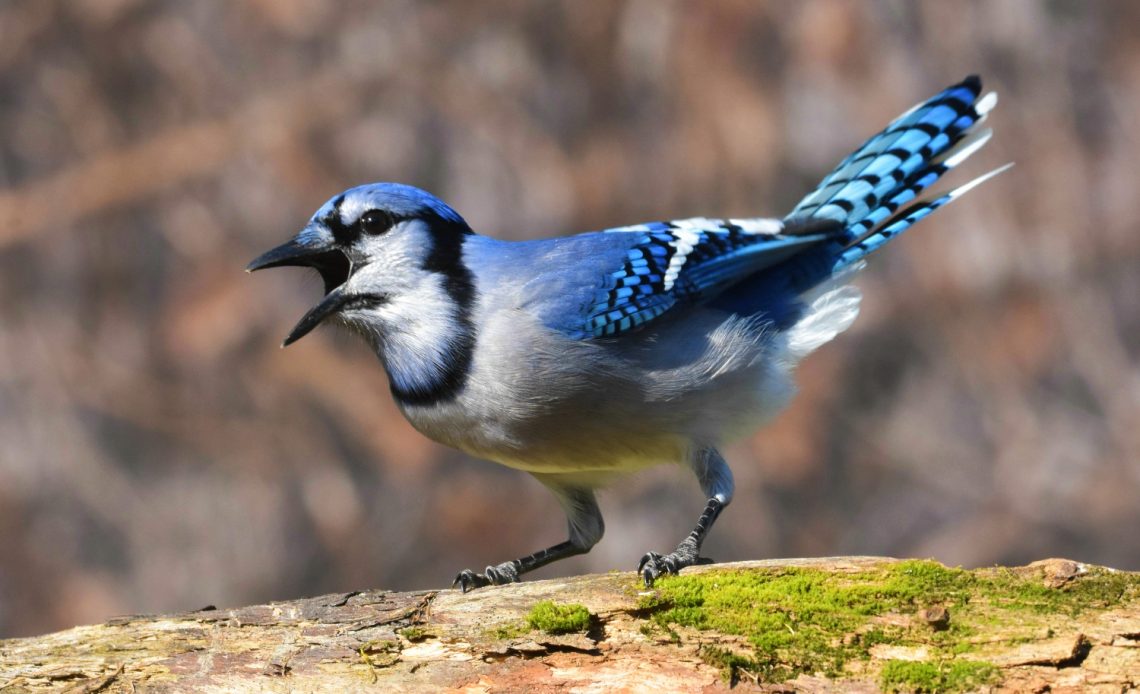

We’re here to help! Wild Yards is a completely free website that is 100% dedicated to helping you create a wildlife-friendly, sustainable yard. Read more
WildYards is reader-supported. When you buy a product through a link on our site, we may earn a comission. Every product is independently selected by our (obsessive) editors and our reviews are unbiased and objective. Read more about our mission or our privacy policy.
Birdwatching is a fun outdoor activity for people of all ages. But, beautiful as your local birds may be, some of them can be pretty aggressive. Like other members of the animal kingdom, most birds aren’t afraid to become territorial if they feel their nests or their lives are in danger. Before you head outside to look for birds, it’s important to identify which species are known to be aggressive birds, so you can keep a careful eye on them while you’re in your backyard.
Mockingbirds, grackles, crows, bluejays, and robins are among the most aggressive backyard birds. However, they’re less likely to inflict as much damage as other aggressive species, like hawks, barred owls, and great horned owls.
What makes some birds so aggressive?
When we label some birds as “aggressive”, what we really mean is that these birds are most likely to attack humans and other animals, not that they’re necessarily mean. Animals aren’t so emotional. They only do things that make sense to them. If one of the following birds were to show aggression, it would likely be out of defensiveness. Maybe another animal wandered too close to the bird’s nest, or, perhaps the “aggressive” bird was resource-guarding.
Of course, that’s not to say that you can’t get hurt by a bird who’s acting defensively. While birds don’t behave aggressively in the same way mammalian predators might, they can still be dangerous. So always be careful when observing the following birds, and make sure you don’t get too close to them.
Northern Mockingbird
Mockingbirds can be found in nearly all parts of the U.S., including Hawaii, where they were introduced in 1928 to help keep pest levels down. These birds are particularly aggressive towards cats, dogs, squirrels, and other small mammals who venture too close to their nests.
Mockingbirds are very vocal, mimicking the songs of other birds while sitting high up on treetops to search for prey. These birds are often observed singing, eating, and enjoying life on their own, but they won’t hesitate to team up to mob a perceived threat.
Mockingbirds are most likely to be aggressive around mating time. Be wary of these birds from spring to summer, as they build their nests and lay their eggs. While mockingbirds are far more likely to antagonize other birds and small mammals who breech their territories, it’s not unheard of for a mockingbird to attack a human.
At just 10-inches in length, a mockingbird attack would hardly be considered life-threatening, but it would certainly be very unpleasant. These persistent birds use their beaks and claws to harass perceived threats, squawking all the while, trying to scare them away. Mockingbirds don’t usually attack people, but they do remember people they’ve perceived as threats in the past.
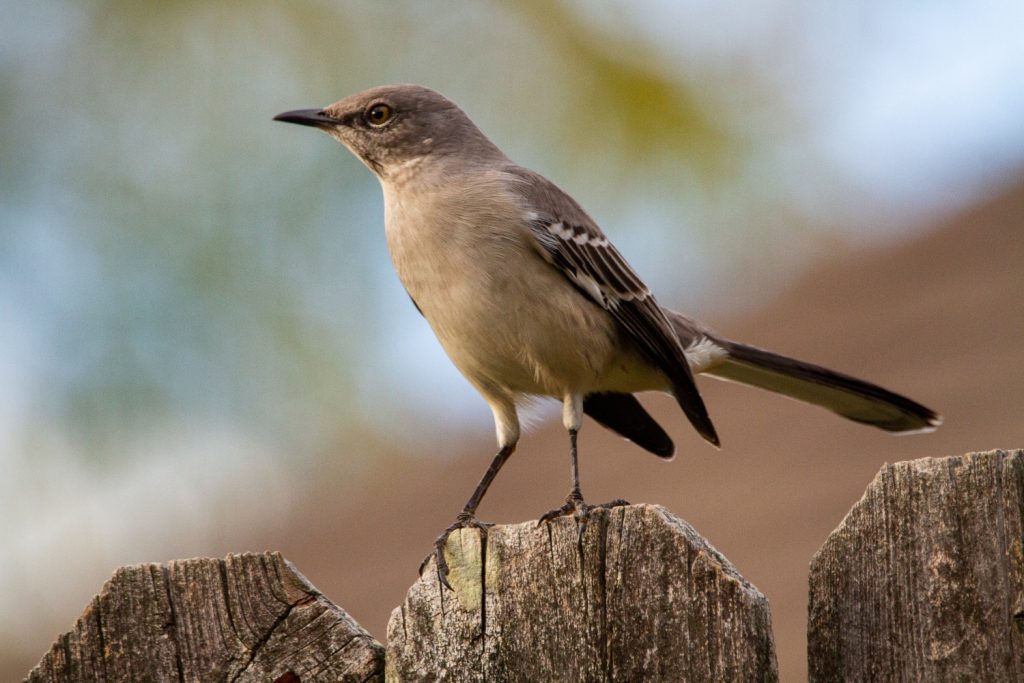
American Crow
The American crow is a clever bird, known to show appreciation to those who are kind to them. If you’re lucky enough to get on a crow’s good side (by feeding it or by protecting it from potential predators), the crow may go out of its way to bring you tokens of its gratitude. Crows are attracted to bright, shiny objects like bottle caps and buttons. They may share their finds with you if they like you.
If they don’t like you, they may attack you. They may even tell other crows about you so that those crows can keep an eye on you, too. Crows are social birds, ganging up on small mammals and even people when they wander too close to their territories. And, like mockingbirds, they never forget a face. If you’ve ever chased a group of crows out of your yard, they probably still remember you. They may even decide to exact revenge by harassing you when you’re in your yard.
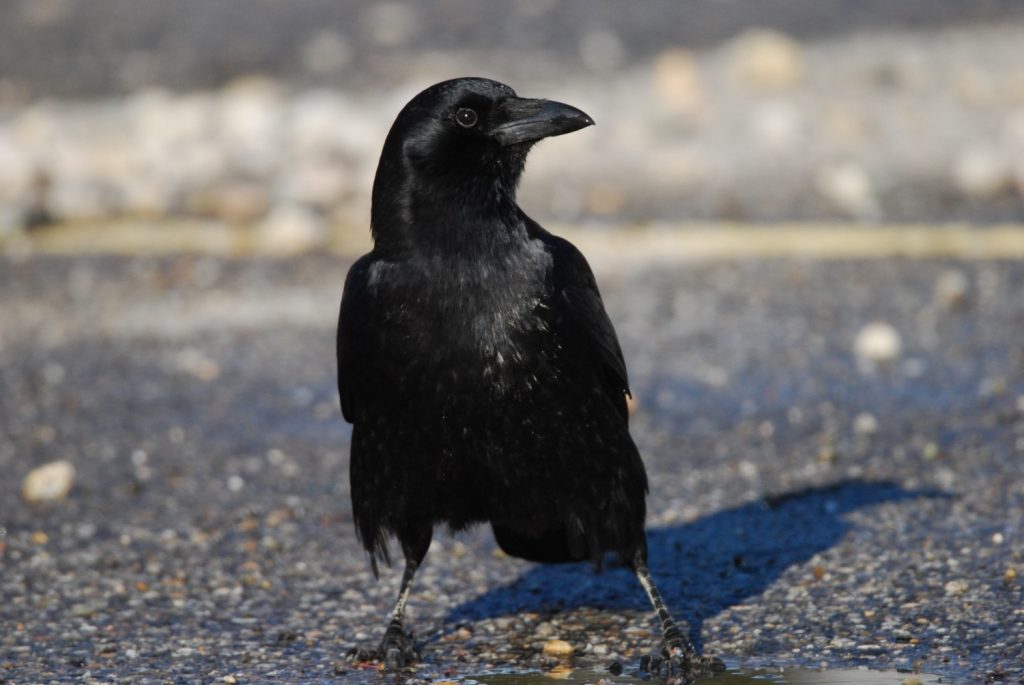
Hawk
Fearsome birds of prey with sharp beaks and powerful talons, hawks are far more likely to go after chickens, dogs, and cats than they are people. But, that said, hawks have been known to attack humans. Because hawks are birds of prey, they’re naturally more aggressive than songbirds. And since they’re so large, there’s no need for them to gang up on potential threats. A single hawk can do plenty of damage on its own.
Hawks are very defensive of their homes. They’ve been known to attack hikers who have stumbled too close to their territories, particularly from late winter to early summer when they make their nests and rear their young.
Hawks typically live in mixed conifer and hardwood forests. They build nests in large trees with healthy canopies, where they sit high up in the treetops to search for prey. If you spot a hawk in your yard, keep your distance. Never turn your back on a hawk, as they prefer to attack when their opponent’s defenses are down. When confronted by a hawk, be as loud as possible, and flail your arms around while backing away slowly.
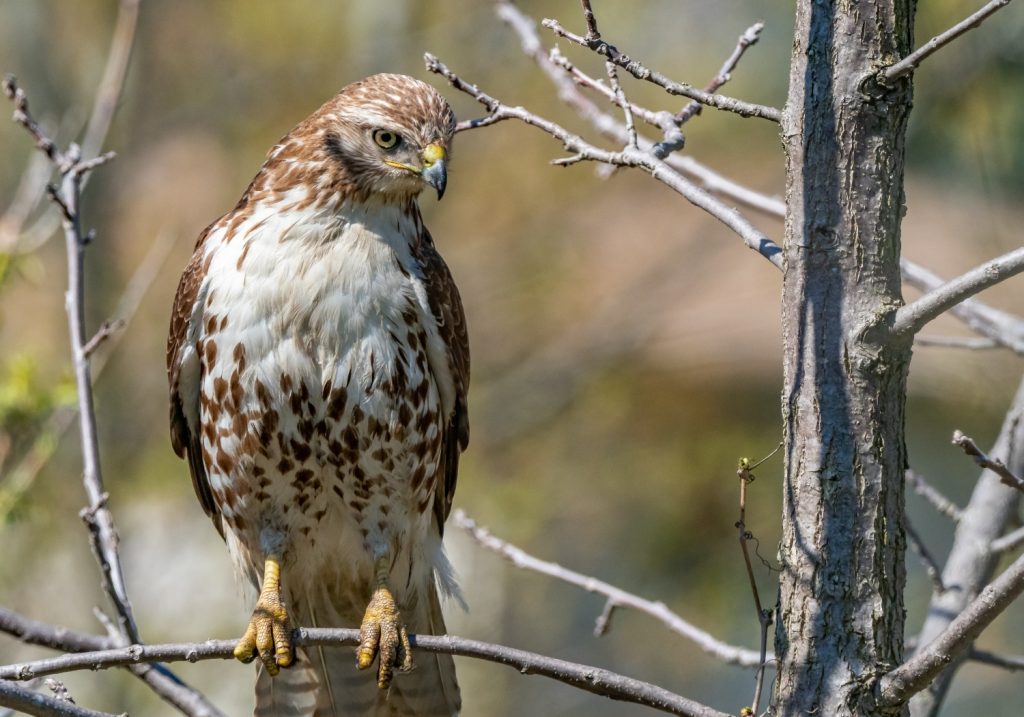
Blue Jay
With their vibrant blue plumage and distinctive crests, blue jays are easy to identify, and fun to watch. These birds are always busy, splashing in bird baths and visiting bird feeders (especially when they’re filled with sunflower seeds). They’re also very sociable, staying with their parents for up to 2 years before finding their lifelong mates and starting their own families.
If you have a family of blue jays living in your yard, you’re far more likely to see them mobbing squirrels or neighborhood cats. Blue jays will also team up to chase away raptors, including owls and hawks. They work hard to keep these predators away from their nests. Many blue jays will mimic the cries of a hawk to alert other blue jays of a hawk’s presence nearby, or to trick other birds into thinking that a hawk is close.
Blue jays seldom attack people, and when they do, the injuries are pretty superficial — nothing compared to a hawk attack. But that doesn’t mean that a blue jay can’t hurt you. These birds are most likely to be aggressive in late spring to midsummer when they nest. So give them plenty of space when watching them in your backyard.
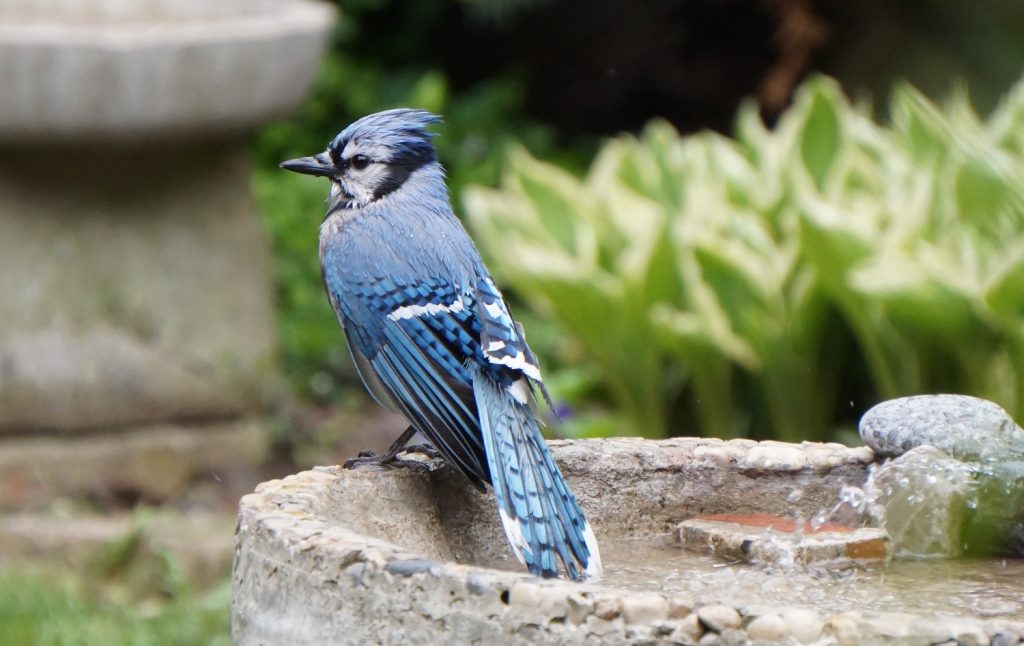
American Robin
Textbook early birds, American robins lay their eggs early in the spring, while most other birds are still building their nests. This is when they’re at their most aggressive, constantly on their guard to protect their young from potential threats. If you stray too close to a robin’s nest at this time, you may become their next target.
Robins have been known to attack people. They’re much braver than you might think a bird of their size could be. But, willing as they are to ward off predators that are many times their size, they’re far more likely to attack smaller critters. Cats, dogs, and squirrels are most vulnerable to robin attacks.
It’s also not unusual to spot robins attacking windows and car mirrors. Robins sometimes see their reflections as a threat. Unfortunately, these birds can damage your property by pecking away at your doors and windows. Consider covering reflective surfaces with newspaper or hanging windchimes nearby to scare robins away.
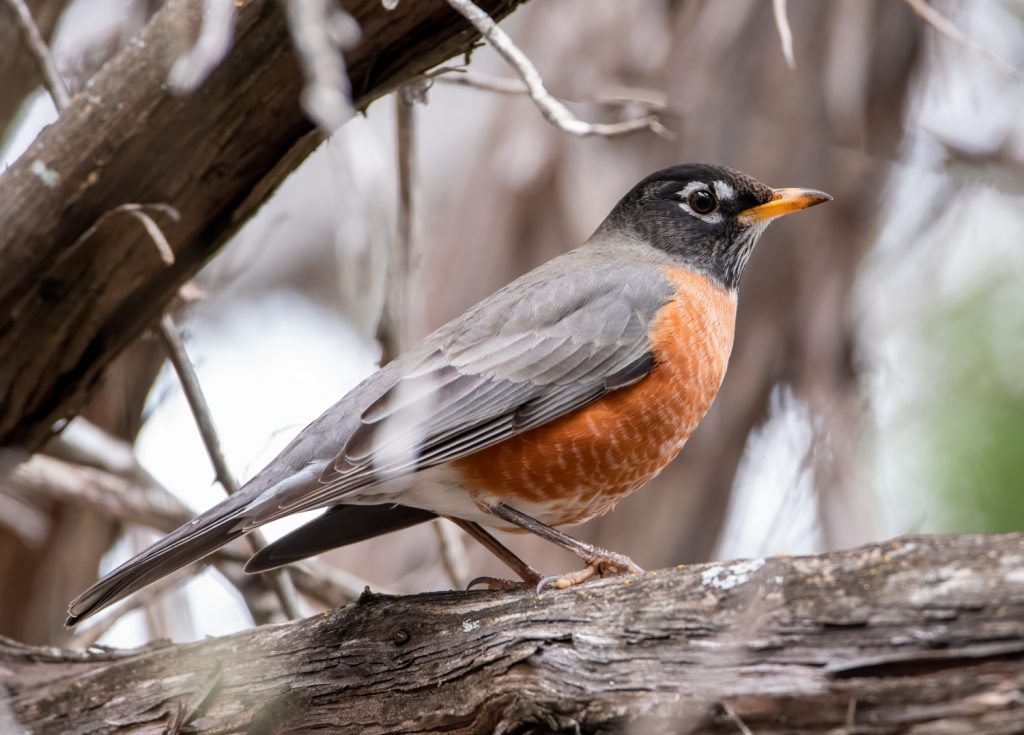
Barred Owl
Barred owls are a mixed bag when it comes to aggressive behavior. Some barred owls are curious about humans and are content to observe them from the safety of their perches without feeling the need to defend themselves. But others will quickly swoop down from their roosts to attack a human that gets too close to its owlets.
These are fairly large birds, measuring 16 to 25 inches in length, and with wingspans of 38 to 49 inches. Barred owls have serrated feathers that disperse turbulence, allowing them to glide noiselessly as they fly in for a kill. Their silent nature makes them difficult for both potential prey and birdwatchers to spot. And because they can fly so quietly, they can sneak up on you and attack before you even know what’s hit you.
Barred owls prefer to make their homes in swampy areas, with a good mixture of forest and open space. These owls are most active during the early morning and late evening hours, so stay inside during these times, and keep your cats and dogs indoors, too.
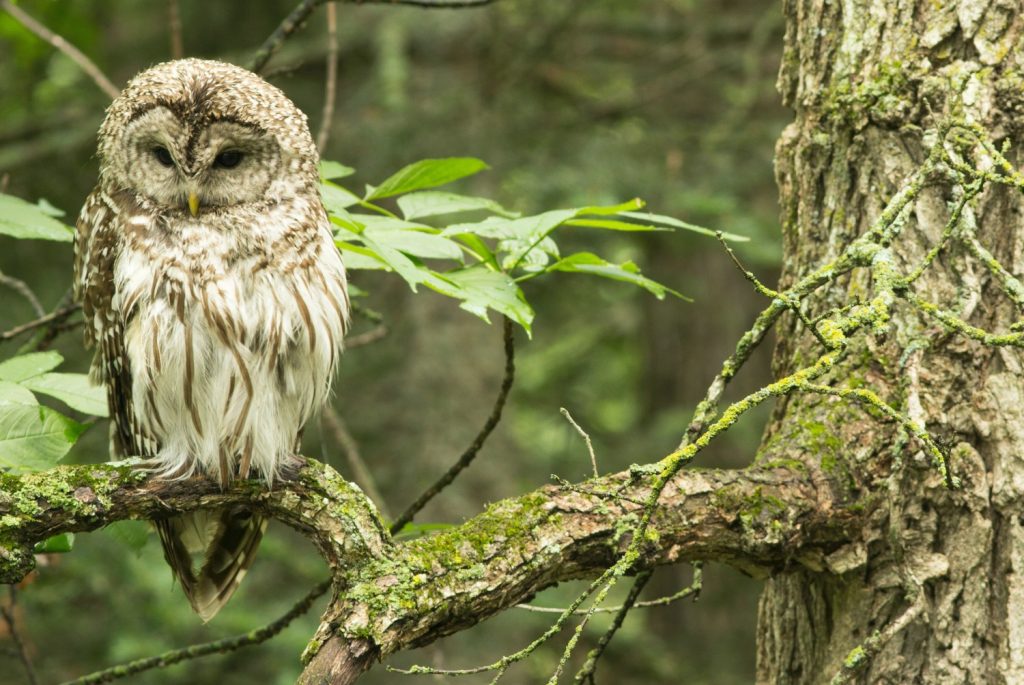
Gull
Gulls may not do much damage if they attack you, but they can be a real nuisance. These birds may behave aggressively toward anyone who gets too close to their nests. But they’re more likely to antagonize you simply for refusing to share your snacks with them.
Because gulls live near water, where humans also like to congregate, they’re pretty used to being around people. They’re so comfortable with people that they’re likely to view us not strictly as predators, but also as competition. While most of the birds on this list will attack to protect their young, in the gull’s case, it can usually be chalked up to resource-guarding.
If a gull finds a meal, it may attack anyone, bird or human, who stands in the way of it. Since gulls usually attack because they’re hungry, you should always be wary of them, regardless of the time of year.
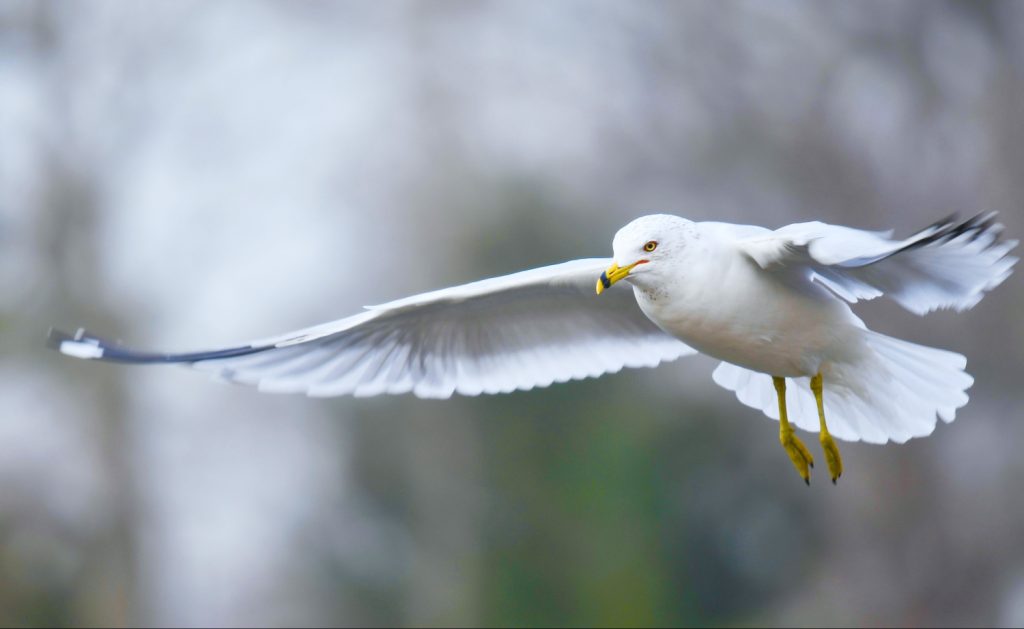
Magpie
Magpies are fearless birds, often seen sitting on fence posts out in the open, searching for insects and small animals to eat. These birds follow herds of deer and moose, picking ticks off of them and caching the leftovers to come back to later. Like crows, magpies are attracted to shiny metal and may hoard small objects like coins in their nests.
Though magpies are usually happy to leave humans alone, they can be incredibly territorial, especially during the breeding season from spring to summer. Magpies prefer to nest in tall trees, but will also nest in hedges occasionally. These birds use surprise divebomb attacks to ward off predators, and they almost always go for the head.
You’re not likely to sustain life-threatening injuries from a magpie attack. But their sharp claws can slice your skin and leave you with serious bruises. So if you live in an area where magpies are known to nest, keep the back of your neck covered by turning the collars up on your shirts or wearing hoodies, and use safety goggles or sunglasses to protect your eyes.
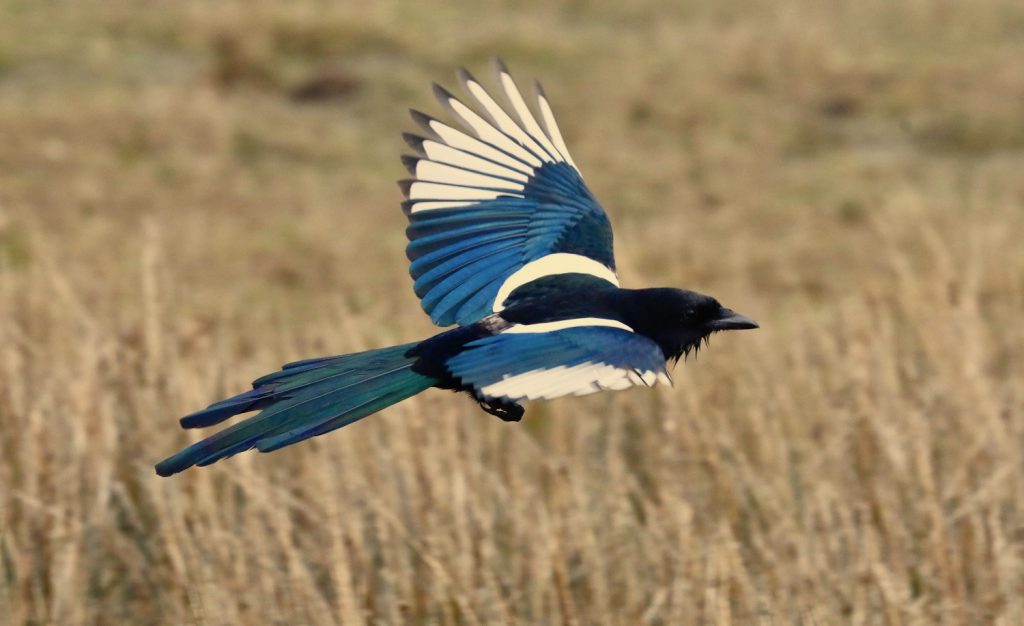
Canadian Goose
These graceful, majestic birds are so beautiful, it can be tempting to get close enough to a flock of Canadian geese to offer them a few pieces of bread. But don’t. Geese can be incredibly aggressive, charging potential predators to chase them away, biting at them, and flapping their wings as they go.
Although geese don’t have proper teeth, they do have tough tooth-like cartilage on their beaks that feel a lot like teeth when they bite. Never approach a Canadian goose, and be particularly wary of these birds in the spring, when they raise their young.
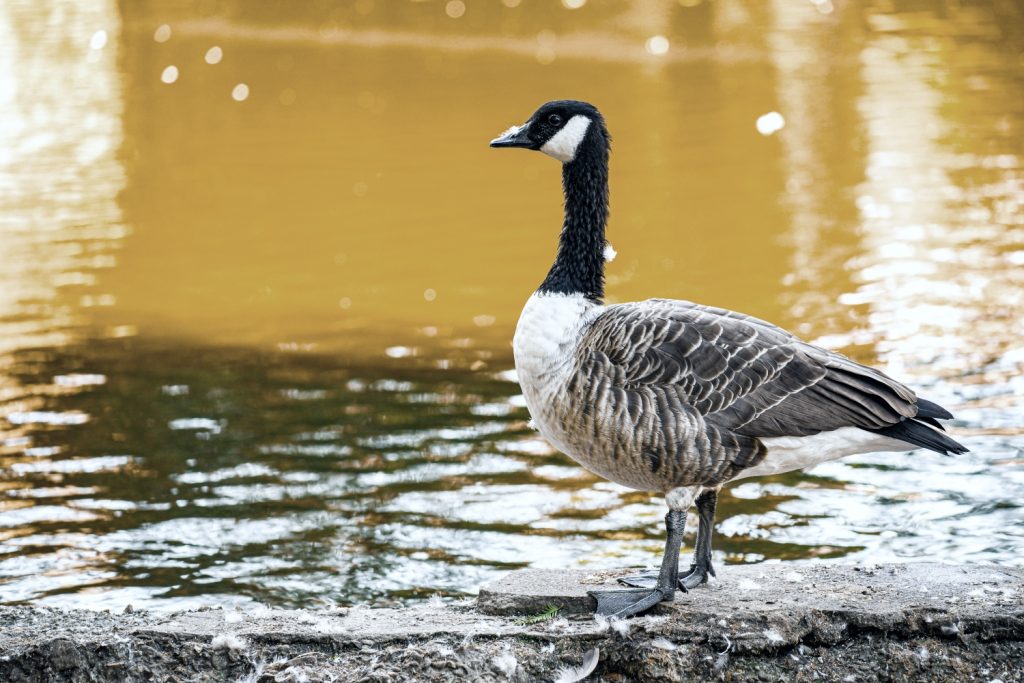
European Starling
Native to the European continent, you can thank Eugene Schieffelin for introducing this bird to the United States. Eugene was such a big fan of William Shakespeare that, in 1890, he brought 60 starlings to America, to pay homage to the bard’s play, Henry IV.
Unfortunately, the starlings that were introduced to America were noted to be particularly aggressive, a trait that most modern starlings have inherited. Starlings are social birds who will mob predators to protect their territories. Sometimes that predator is a hawk. Other times, it’s a human.
If you have starlings on your property be sure to keep your distance, especially during the nesting season in spring. Consider installing an owl or hawk statue to keep these pesky birds out of your yard.
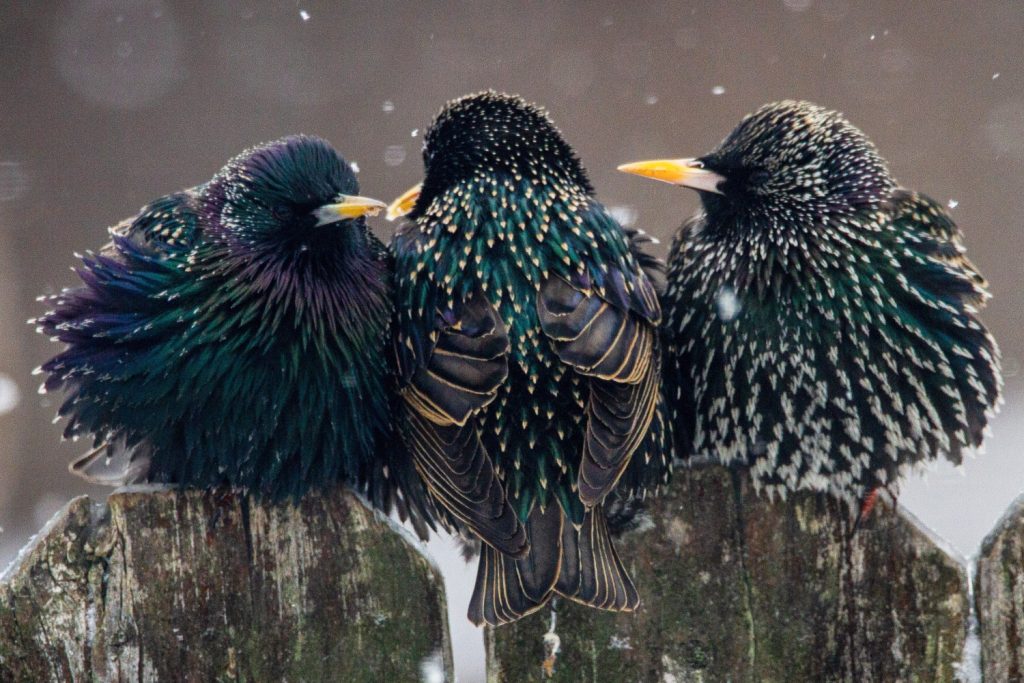
Great Horned Owl
These imposing owls have long ear tufts and a severe expression that lets you know right away that they are not to be trifled with. Great horned owls are pretty subdued for most of the year, preferring to avoid human contact. But when the mating season starts in fall, these owls become territorial, chasing predators away from their nesting sites and even attacking people and pets.
A great horned owl’s talons can exert a stunning 500-pounds of pressure per square inch, making it impossible for prey to escape their grasp. But if one of these owls decides to attack you, the consequences could be devastating. So stay inside in the evening and morning hours, when these owls like to hunt.
Because great horned owls prefer to perch in dead trees, and because they become more vocal at around the same time they become more aggressive, they’re usually pretty easy to spot. If you happen to see one, don’t turn your back on it, but do keep your distance.
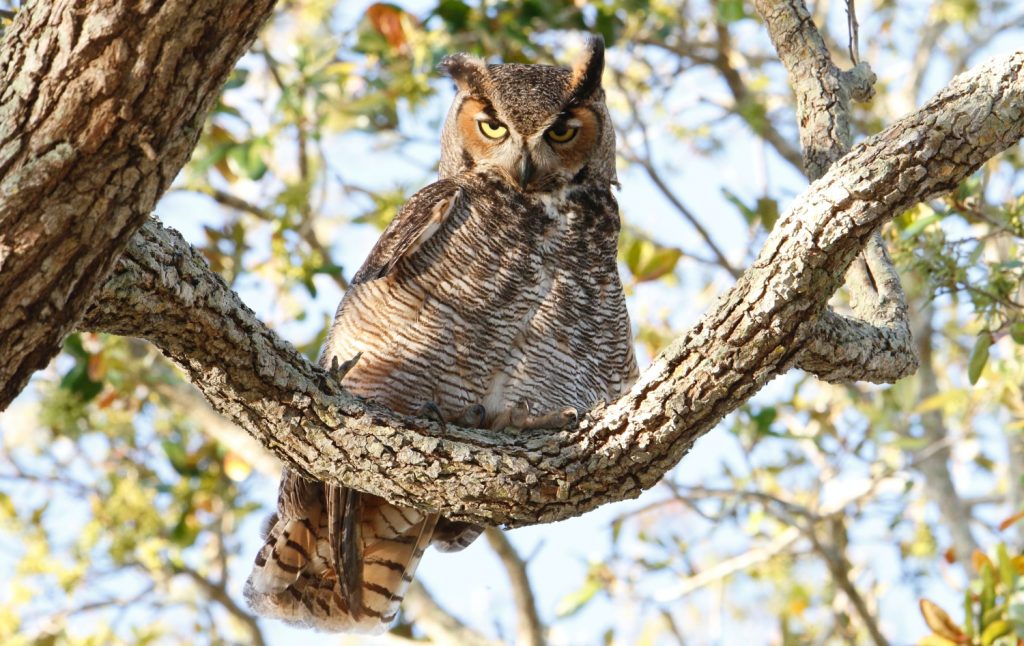
Red-headed Woodpecker
Although nearly all kinds of woodpeckers are territorial, red-headed woodpeckers are the most aggressive of the bunch. Red-headed woodpeckers have been known to antagonize humans, pets, and, of course, other birds. But they’re most aggressive toward each other, particularly during the nesting season from spring to midsummer.
Woodpeckers use loud caw-like cries when chasing off competitors. They may tap their bills against metal poles as a way of marking their territories. Lucky for the woodpecker, its brain is so small that it never sustains damage from its incessant pecking.
If woodpeckers like to visit your yard, you don’t need to be overly afraid of them. But do keep a close eye on them when you’re outside.
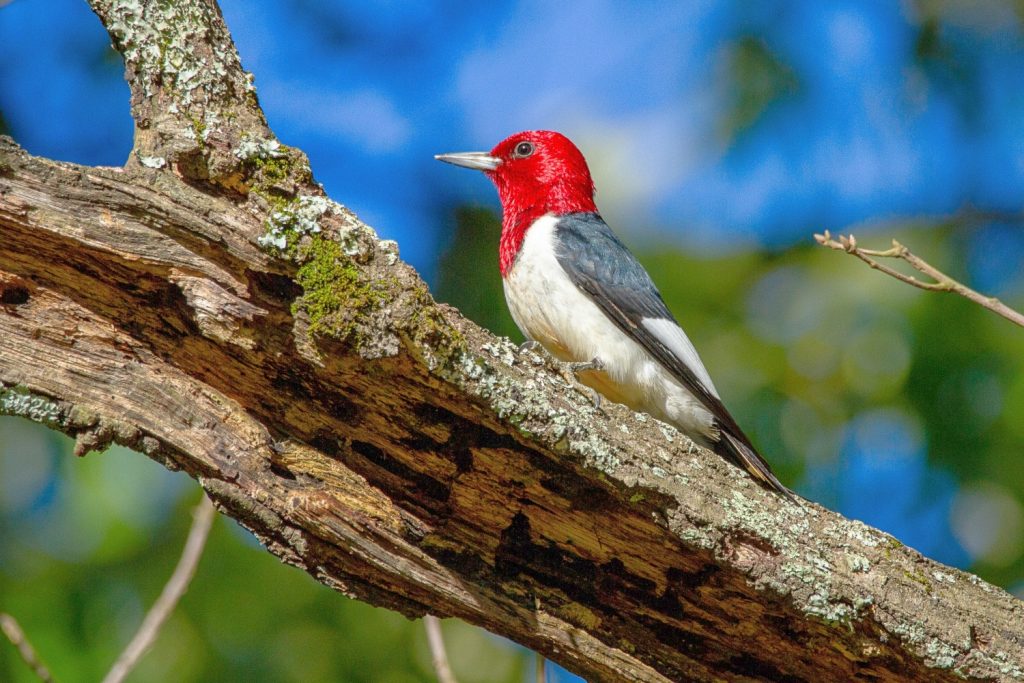
Grackles
Grackles are long, lean blackbirds with iridescent undertones of purple, blue, and green in their dark plumage. You’ll often see grackles congregating in parking lots, where they can scavenge for food. They’re not too scared of people and may attack if they feel threatened. But they’re more like gulls in that, if they do attack, they’re likely just doing so to guard their food.
Grackles are highly adaptable. They’re as happy to scrounge around an urban parking lot for leftover fast food as they are to hunt for insects in the countryside. These birds prefer to live in flocks, so they can mob larger predators, like owls, if they need to protect their nests.
It’s unlikely you will be attacked by grackles. And, although they may harass your pets, they’re not likely to do much damage. While these birds are somewhat aggressive, their main line of defense is being loud which, although it can be annoying, doesn’t cause any real harm.
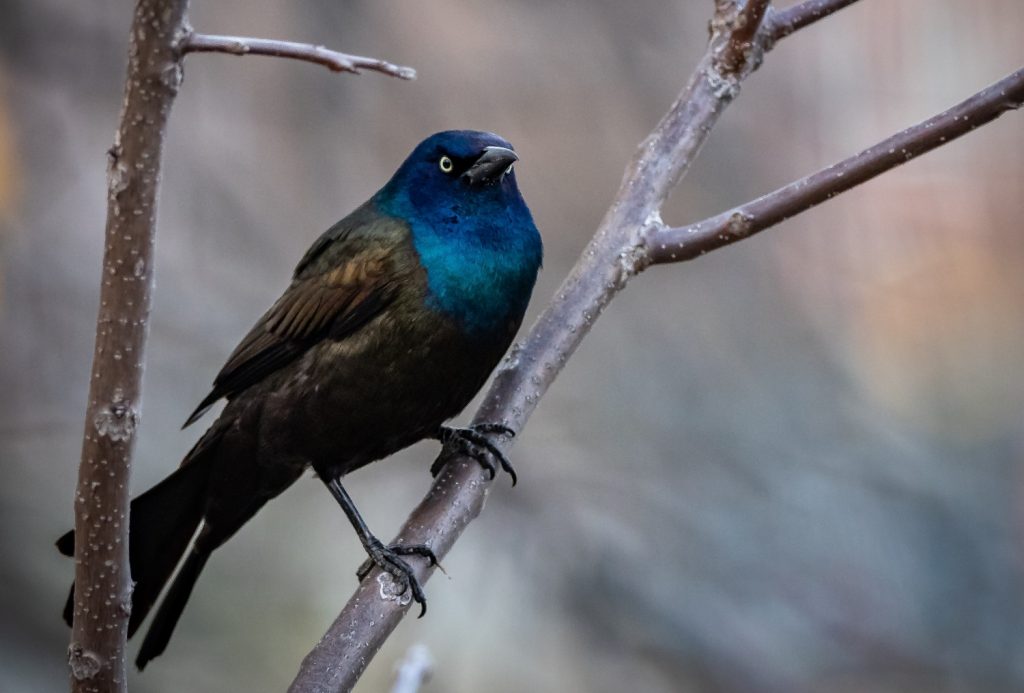
How should you deal with aggressive birds in your yard?
If any of these species of birds visit your property, be mindful of where their nests are located and avoid them. Install owl nesting boxes on the outer edges of your property far from your house, and stay away from them during the breeding season.
Consider investing in protective gear for your pets or enclosing their outdoor pens to keep them safe from bird attacks. If the birds in your area are aggressive, try making your yard as noisy as possible by hanging up windchimes and leaving a radio on. You can also try installing a predatory bird statue, just be sure to move it around every few days to keep local birds on their toes.
Some birds are aggressive, but, in their minds, they have good reasons to be. As a birdwatcher, it’s your responsibility to respect their space. While we certainly encourage anyone to get out and admire their local wildlife, be sure to do so from afar.
